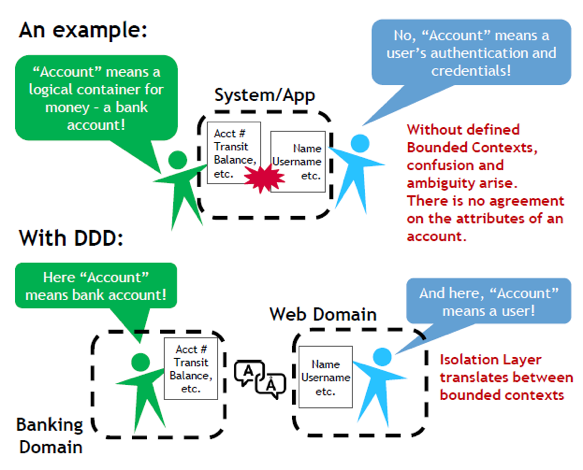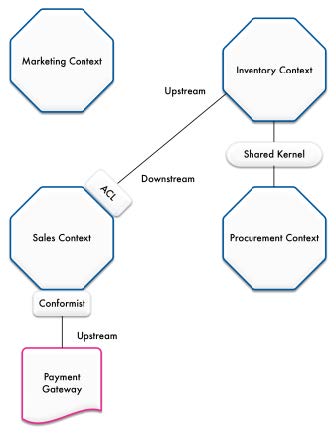

In order to disambiguate, I'm going to refer to software applications as "apps". I'm going to call these two stages the setup and the application. Sorry for being vague but the naming here is a bit fuzzy. In most app features you develop, there are two parts of the story. The direct answer to that part of the question is that it is perfectly okay to do so, because the application of the user access bounded context is inherently intended to be used by the application layer (across all bounded contexts that need user access control). the Orders application layer) depend on the User Access domain logic.

I suspect your question stems from wanting to avoid having another context (e.g.

About you (the customer/user/Ngoc Nguyen/shipping address X, billing address Y, etc). Do you think that all the "boundaries"/"departments" in companies like Amazon, do understand the word "User" in the same way? Probably, each will give you a different description of what a user is, regardless they will all be speaking about the same. When I said, "think of Users as an abstraction", I was literaly suggestion making the notion of "User" an abstract element of the domain and implement concrete "Users" in outer layers. But each layer takes only what it needs from it. A person with a name, shipping and billing addresses, credentials, etc. All three represent an actor of the system that incarnates all these properties. Of course, in the end, all three things are the same. What's a user? A name? An ID? What does the core need from the User to work? What's a user? Personal data? A shipping and billing address? What does the business need from the User to work?įinally, from the core layer standpoint. What's a user? What does this layers needs from the User to work? It's only a login password? A name? Roles? Could we rename User to Account? Or Principal? Rewording might help you to think about it.įrom the application layer standpoint. Basically, you have imposed a strict "idea" of what a User is and forced all the boundaries to deal with it.īut, could boundaries have different "meanings" or purposes for the word User? Absolutely. Perhaps, you have modelled User only once and, in consequence, appears everywhere. Its meaning or concreteness varies depending on the layer you are working on. It might help you think of "Users" as an abstraction.


 0 kommentar(er)
0 kommentar(er)
